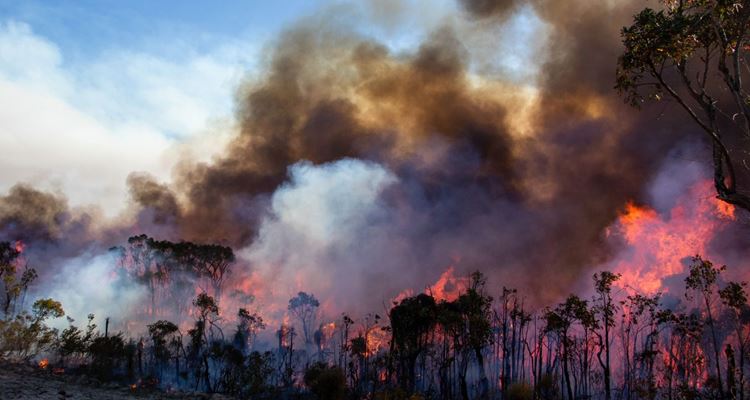DFES extends Large Air Tanker’s stint in WA in response to increased risk of bushfires in autumn

The Department of Fire and Emergency Services has secured an extension for the WA Large Air Tanker (LAT) after extending the southern bushfire season into autumn because of an increased risk of fires.
The Autumn Seasonal Bushfire Outlook, released today by the Australasian Fire Authorities Council, indicates hot, dry and windy conditions will continue over the next three months.
The South West Land Division experienced its second hottest year on record in 2023, meaning a large part of the state will enter autumn with its landscape drier than usual.
While the risk remains normal for central and northern WA, part of the West Kimberley is also drier than usual which may reduce the opportunity for prescribed burns.
The LAT will remain in WA until 27 March while Helitaks and Black Hawk helicopters will be available until April.
Fire and Emergency Services Commissioner Darren Klemm AFSM urged the community to stay vigilant and have a bushfire plan ready.
“The most severe heat may be gone, but the bushfire risk hasn’t. We have also extended our ’Got 15 minutes to burn?’ advertising campaign into autumn because we want to see every Western Australian household well prepared with a plan so they can stay safe in an emergency,” he said.
“It is critical that every household has their bushfire plan ready that outlines key decisions for your family including when you will leave, where you will go and what to take,” he said.
“There are still only 1.5 per cent of households with a recorded bushfire plan compared to 93 per cent of the State that is bushfire prone. It only takes 15 minutes to make those lifesaving decisions using the My Bushfire Plan app or website.”
Commissioner Klemm paid tribute to the dedicated work of the thousands of career firefighters and volunteers who have helped keep West Australians safe this summer after DFES activated the aerial fleet earlier than usual because of an increased threat of fires due to hot and dry conditions during spring.
“It has been a long, challenging season with firefighters responding to 3757 bushfires since October,” he said.
“DFES’ aerial fleet has flown more than 1640 hours across 152 incidents, dropping 12,262,946 litres of water and retardant on firegrounds.
“Recent fires in Kwinana, Gwelup and Bibra Lake have been a timely reminder that bushfires do occur in suburban area.”
Additional statistics:
- Large Air Tankers have flown 74 hours and dropped 856,372 litres of water and retardant on firegrounds this season.
- The WA Large Air Tanker was scheduled to begin operations on 1 December but was brought forward to 4 November.
- The two Black Hawk helicopters based in Serpentine and two Helitaks based in Gingin were activated almost three weeks ahead of schedule while Helitaks in Busselton were activated a month early.
- The State Government funded aerial fleet consists of more than 30 rotary and fixed-wing suppression and aerial intelligence aircraft and is jointly managed by DFES and the Department of Biodiversity, Conservation and Attractions.
- There have been 3757 bushfires across the State since October, an increase of 33 per cent for the same period last season (2816 bushfires between 1 October 2022 – 24 Feb 2023).
- 19,376 bushfire plans have been completed with another 39,450 started but not finished.
- More than 30 bushfires have hit emergency warning level since October and many of those were in the Perth metropolitan area including Bibra Lake, Piara Waters, Cockburn and Wanneroo.

